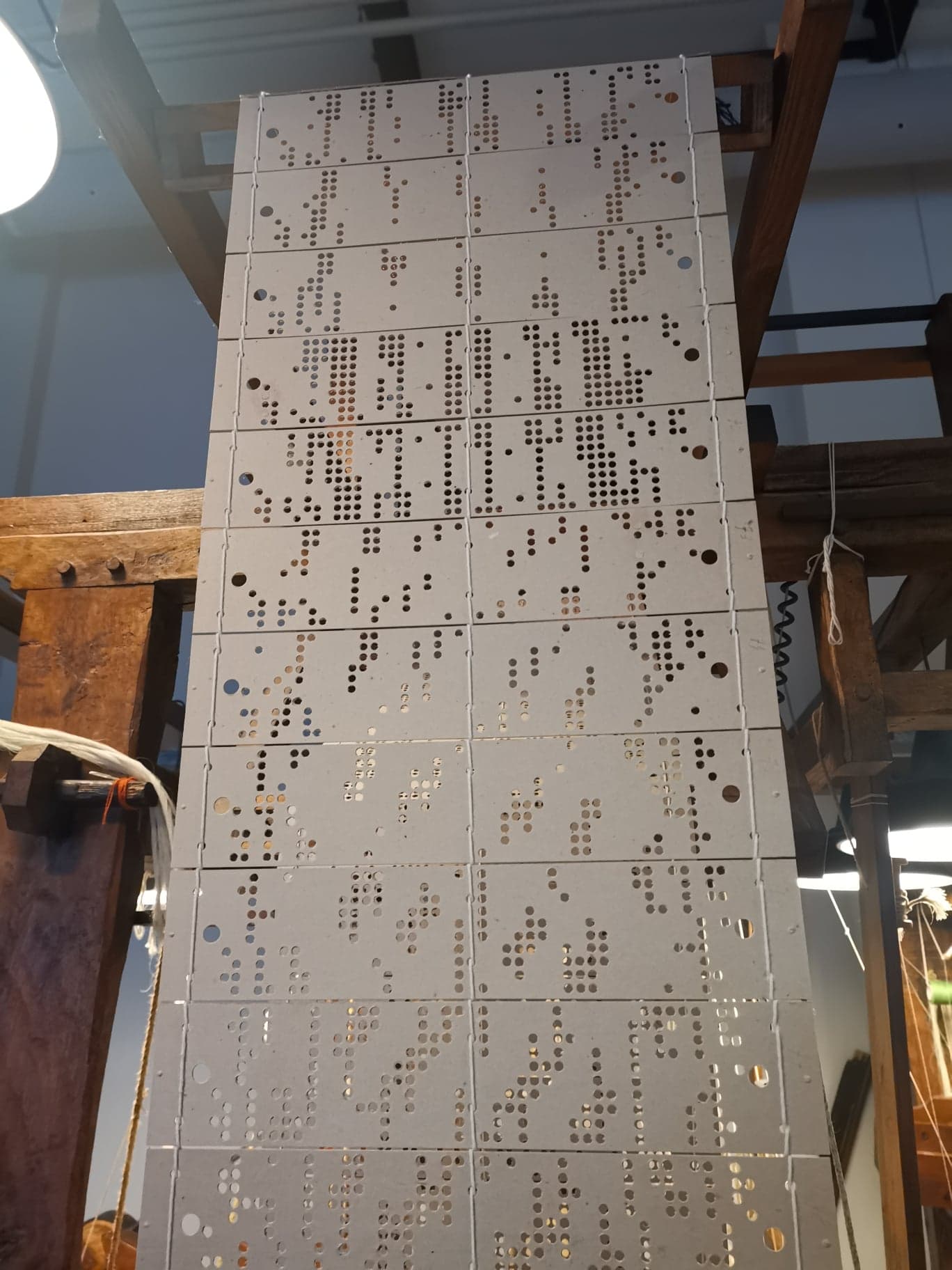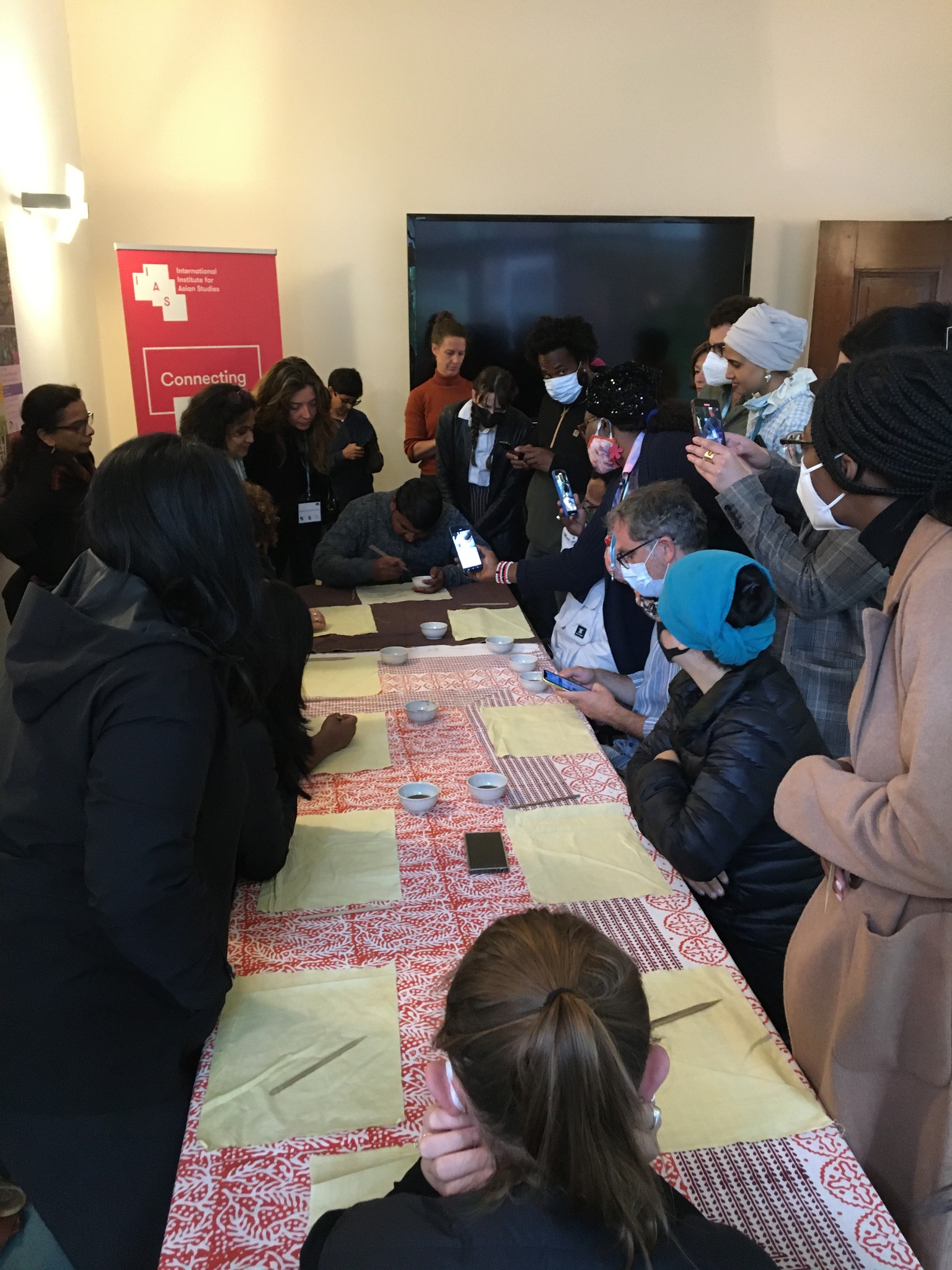Accession card
Description
The first photograph is one that depicts a Jacquard loom print card, a piece of cardboard that has been punctured with holes in order to consistently replicate a complex design on a weaving loom. This particular print card would have been used to create handmade Dutch damask linen in the 19th century, as part of the W.J. van Hoogerwou & Zonen mill whose pieces are currently located at the Textielmuseum in Tilburg, Netherlands. One such product of damask linen would be a tablecloth, which was also on display nearby.
The second photograph is one that depicts craftsman Kirit Chitara, as he demonstrates to the participants and convenors of the ISGS Textiles & Dyes as Transnational, Global Knowledge how to create a design outline for a Mata ni Pachedi (meaning 'Behind the Mother Goddess'), sacred textiles used for shrines in Ahmedabad, Gujarat in India. This was part of a walkthrough of the entire process for creating Mata ni Pachedi, from design to dyeing, which the participants then created their own designs.
Both designs are considered handmade, with the Jacquard looms still needing to be manually operated by a weaver, while Mata ni Pachedi is usually created by an artisan either with a wooden block or free-hand.
Damask linen and Mata ni Pachedi both contain beautiful designs, but serve very different purposes. One is created with the purpose of being sold and commodified, while the other is created with religious purpose. For the damask, function of the linen supercedes its form, while for Mata ni Pachedi, the form of the design (the depiction of the aforementioned Mother Goddess and other Hindu deities) is what gives the textile its purpose/function. One could argue that this means that one is more valuable than the other based on its meaning. But at the same time, the techniques used in modern textile creation and design can trace their roots back to the Jacquard loom, while the practice of creating Mata ni Pachedi has slowly dwindled in Gujarat to Kirit's family and a few others. Even if one has a more sacred purpose, it is becoming clear that one practice is more favored than the other.
Does this mean then that one method is more worthy of our attention than the other? How should we as scholars and as people look at these textiles and techniques and compare them for study? Should commercial/economic promise be the only metric looked at when deciding something's value, or consequently, do seemingly meaningless practices contain more than initially believed?
Code
Date
Location
Credits / copyrights
Loom Punch Card Photograph
Author: Enrico Joaquin Lapuz
Location: TextielMuseum, Tilburg, Netherlands
Mata ni Pachedi Photograph
Author: International Institute for Asian Studies (IIAS)
University
Title
Medium
- Image
Image contains
Linguistic translation
Mata ni Pachedi means 'behind the Mother Goddess' in Gujarati
Damask is taken from Middle English, named after the city of Damascus where the fabric was first created




